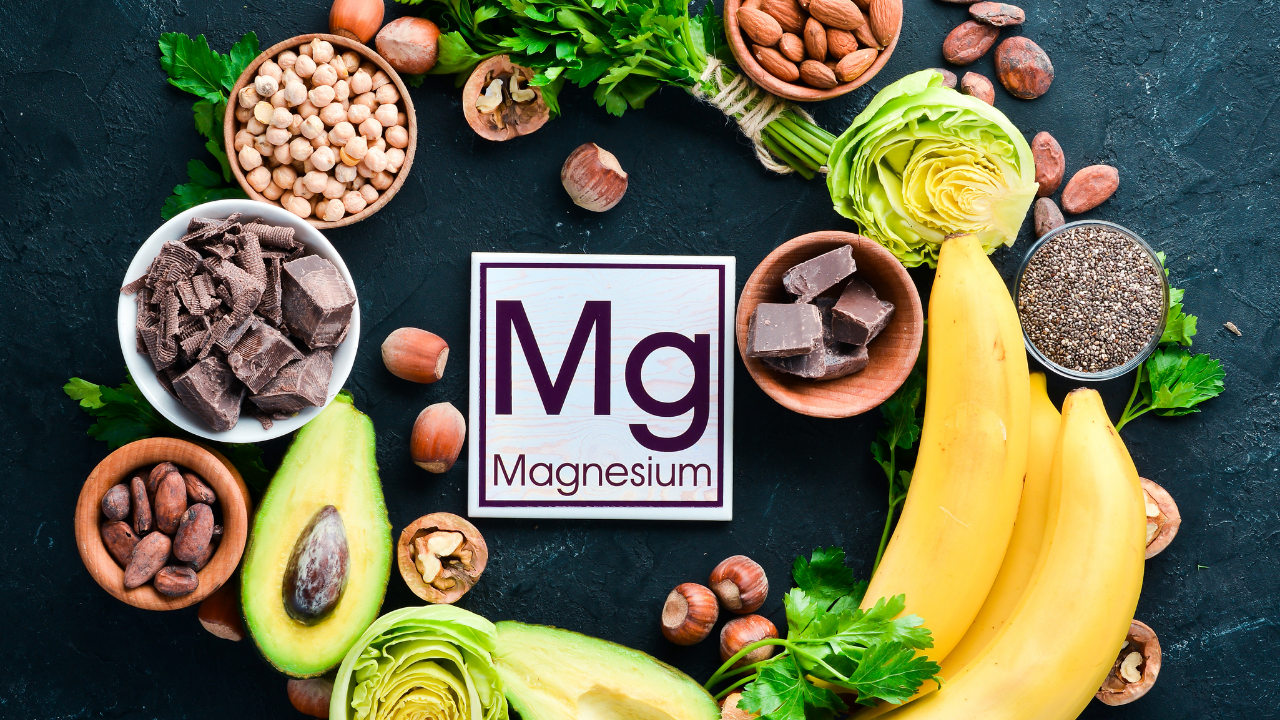Do you feel tired, weak, have low energy and your heart skips beats?
Magnesium deficiency might be contributing to these symptoms.
Let’s dive in and find out more signs and symptoms you might not have heard about.
What is magnesium?
Magnesium is a vital mineral found in your body.It is found in various foods and is also available as a supplement.
What does magnesium do?
Magnesium plays an essential role in various processes in your body. It is important for blood pressure regulation, blood glucose control, plays a role as a cofactor in multiple biochemical reactions in your body. Consequently, muscle function, nerve function as well as protein synthesis rely on magnesium in your body. Magnesium also plays a role in DNA and RNA synthesis.
Where is magnesium found in our body?
About 99% is found in your bones, muscles, and non-muscular soft tissue. 50-60% of this are mineral components of bone. You lose magnesium content in your bone when you become older. Only 1% of magnesium is found in your blood ( serum and red blood cells).
What is a normal magnesium level?
According to the health professional fact sheet(NIH) a normal serum magnesium concentrations range between 0.75 and 0.95 millimoles (mmol)/L .
Hypomagnesemia is defined as a serum magnesium level less than 0.75 mmol/L. Although not a routine test, your doctor can check your level through a simple blood test. The main two organs that play a role in controlling how much magnesium is absorbed and excreted are your GI tract and your kidneys.
What are risk factors for magnesium deficiency?
These can include:
- Age
- Medications such as certain antibiotics, diuretics, proton pump inhibitors such as Omeprazole
- Diabetes
- Decreased intake in your diet
- Being hospitalized (in nearly 12% of hospitalized patients)
- GI diseases such as Crohn’s disease or celiac disease
- Drinking too much alcohol
- Hyperparathyroidism
- After thyroid or parathyroid surgery causing hungry bone syndrome
- Rarer familial kidney diseases
What are the most common signs and symptoms of magnesium deficiency?
- Muscle cramps, twitches or tremors are a sign of magnesium deficiency. When the levels are quite low you are at an increased chance for seizures.
- Lack of magnesium affects nerve conduction leading to a degree of nerve dysfunction. This in turns can affect your brain and your mood. Mental health disorders which can be associated and observed include depression. If the deficiency is profound, it may even be a contributing factor for delirium.
- As mentioned before a large amount of magnesium is found in your bones. When you get older magnesium deficiency is a risk factor for osteoporosis that is loss of bone. Other risk factors for bone loss include lack of Vitamin D, mobility as well as age.

fatigue - When we get older, we lose muscle mass. Another symptom of magnesium deficiency is muscle weakness leading to fatigue. (Loss of potassium is also another factor contributing to weakness).
- If you are magnesium deficient this can lead to an increase of your blood pressure. If your blood pressure rises you are at an increased risk for strokes and heart disease. This is because magnesium deficiency increases the tone of your arteries that is the stiffness of these vessels making them less likely to relax. If they are less likely to relax, they are narrower thus increasing the pressure in the vessels contributing to a higher blood pressure.
- A worrisome symptom and consequence of magnesium deficiency is an irregular heartbeat or arrhythmia. You might feel a skipped beat or feel dizzy or lightheaded. If these arrhythmias persist you are at an increased risk for heart disease and strokes.
- Low magnesium is also linked to headaches and migraines. This is because low magnesium can cause the vessels in your brain to become narrower or constrict.
- GI symptoms of low magnesium include nausea, vomiting and loss of appetite. Less magnesium is absorbed as seen in GI diseases such as celiac disease.
What are good sources of magnesium?

The recommended dietary allowance of magnesium per NIH for men is 400-420 mg/day and women 310-320 mg per day.
½ cup of boiled spinach would be about 78 mg of magnesium, ½ cup of cooked black beans would be 60 mg of magnesium, ½ cup of almonds dry roasted would be 80mg of magnesium.
Examples of magnesium rich foods are generally nuts, seeds, whole grains, greens, wheat, and oat bran. More specific examples would be spinach or kale, bananas, fatty fish such as salmon or mackerel, whole grains such as oats or wheat, seeds such as pumpkin seeds or flax seeds, legumes such as beans or peas, nuts such as almonds or cashews, avocados, and even dark chocolate.
You can also after consulting with your healthcare provider get magnesium from supplements. There are sustained release preparations such as magnesium chloride or magnesium L-lactate. The advantage with this kind of release is that they are less likely to be excreted through your kidneys as they are slowly absorbed in your GI tract. If this is not an option, you can supplement using magnesium oxide. A side effect from magnesium oxide treatment is diarrhea.
ou can check out the entire video here.






